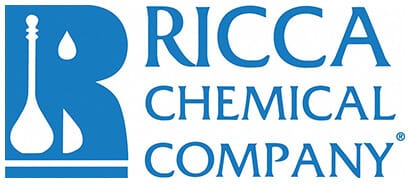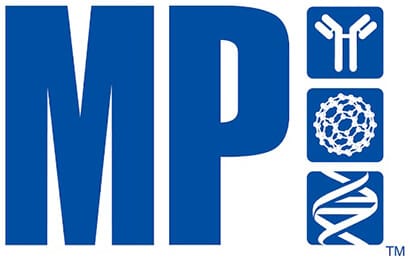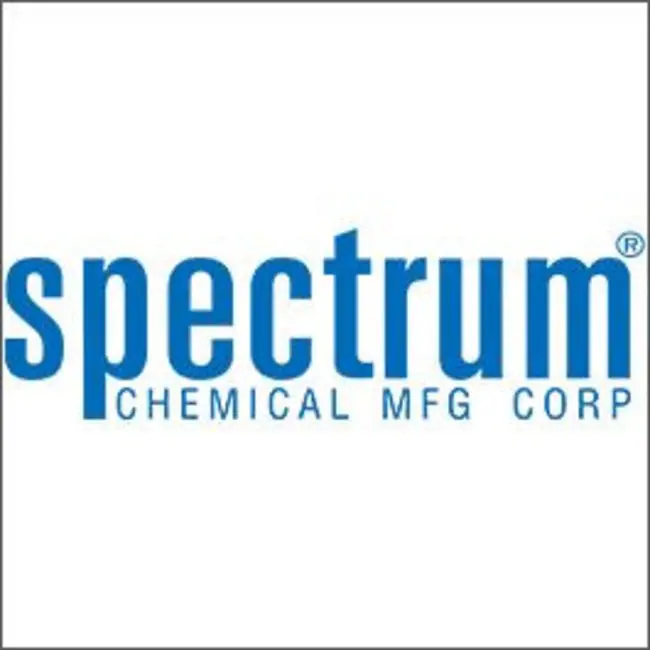Shop
Showing 130901–130950 of 278485 results
-
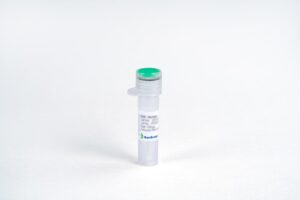
EGF, Human
$90.56 Add to cart View Product DetailsEpidermal Growth Factor (EGF) is a potent growth factor that stimulates the proliferation of various epidermal and epithelial cells. Additionally, EGF has been shown to inhibit gastric secretion, and to be involved in wound healing. EGF signals through the EGF receptor (EGFR) also known as erbB1, is a class I tyrosine kinase receptor. This receptor also binds with TGF-α and VGF (vaccinia virus growth factor). EGF-receptor binding results in cellular proliferation, differentiation, and survival. EGF is a low-molecular-weight polypeptide first purified from the mouse submandibular gland, but since then found in many human tissues including submandibular gland, parotid gland. Salivary EGF, which seems also regulated by dietary inorganic iodine, also plays an important physiological role in the maintenance of oro-esophageal and gastric tissue integrity. The biological effects of salivary EGF include healing of oral and gastroesophageal ulcers, inhibition of gastric acid secretion, stimulation of DNA synthesis as well as mucosal protection from intraluminal injurious factors such as gastric acid, bile acids, pepsin, and trypsin and to physical, chemical and bacterial agents.
-
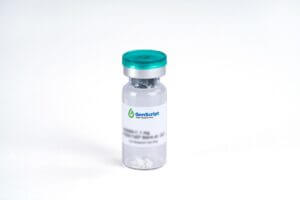
EGF, Human
$86.25 Add to cart View Product DetailsEpidermal Growth Factor (EGF) is a potent growth factor that stimulates the proliferation of various epidermal and epithelial cells. Additionally, EGF has been shown to inhibit gastric secretion, and to be involved in wound healing. EGF signals through the EGF receptor (EGFR) also known as erbB1, is a class I tyrosine kinase receptor. This receptor also binds with TGF-α and VGF (vaccinia virus growth factor). EGF-receptor binding results in cellular proliferation, differentiation, and survival. EGF is a low-molecular-weight polypeptide first purified from the mouse submandibular gland, but since then found in many human tissues including submandibular gland, parotid gland. Salivary EGF, which seems also regulated by dietary inorganic iodine, also plays an important physiological role in the maintenance of oro-esophageal and gastric tissue integrity. The biological effects of salivary EGF include healing of oral and gastroesophageal ulcers, inhibition of gastric acid secretion, stimulation of DNA synthesis as well as mucosal protection from intraluminal injurious factors such as gastric acid, bile acids, pepsin, and trypsin and to physical, chemical and bacterial agents.
-

EGF, Mouse
$224.25 Add to cart View Product DetailsEpidermal Growth Factor (EGF) is a potent growth factor that stimulates the proliferation of various epidermal and epithelial cells. Additionally, EGF has been shown to inhibit gastric secretion, and to be involved in wound healing. EGF signals through the EGF receptor (EGFR) also known as erbB1, is a class I tyrosine kinase receptor. This receptor also binds with TGF-α and VGF (vaccinia virus growth factor). EGF-receptor binding results in cellular proliferation, differentiation, and survival. EGF is a low-molecular-weight polypeptide first purified from the mouse submandibular gland, but since then found in many human tissues including submandibular gland, parotid gland. Salivary EGF, which seems also regulated by dietary inorganic iodine, also plays an important physiological role in the maintenance of oro-esophageal and gastric tissue integrity. The biological effects of salivary EGF include healing of oral and gastroesophageal ulcers, inhibition of gastric acid secretion, stimulation of DNA synthesis as well as mucosal protection from intraluminal injurious factors such as gastric acid, bile acids, pepsin, and trypsin and to physical, chemical and bacterial agents.
-
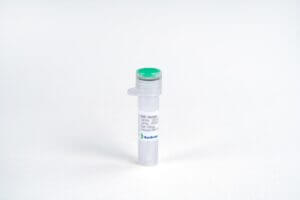
EGF, Mouse
$34.50 Add to cart View Product DetailsEpidermal Growth Factor (EGF) is a potent growth factor that stimulates the proliferation of various epidermal and epithelial cells. Additionally, EGF has been shown to inhibit gastric secretion, and to be involved in wound healing. EGF signals through the EGF receptor (EGFR) also known as erbB1, is a class I tyrosine kinase receptor. This receptor also binds with TGF-α and VGF (vaccinia virus growth factor). EGF-receptor binding results in cellular proliferation, differentiation, and survival. EGF is a low-molecular-weight polypeptide first purified from the mouse submandibular gland, but since then found in many human tissues including submandibular gland, parotid gland. Salivary EGF, which seems also regulated by dietary inorganic iodine, also plays an important physiological role in the maintenance of oro-esophageal and gastric tissue integrity. The biological effects of salivary EGF include healing of oral and gastroesophageal ulcers, inhibition of gastric acid secretion, stimulation of DNA synthesis as well as mucosal protection from intraluminal injurious factors such as gastric acid, bile acids, pepsin, and trypsin and to physical, chemical and bacterial agents.
-

EGF, Mouse
$51.75 Add to cart View Product DetailsEpidermal Growth Factor (EGF) is a potent growth factor that stimulates the proliferation of various epidermal and epithelial cells. Additionally, EGF has been shown to inhibit gastric secretion, and to be involved in wound healing. EGF signals through the EGF receptor (EGFR) also known as erbB1, is a class I tyrosine kinase receptor. This receptor also binds with TGF-α and VGF (vaccinia virus growth factor). EGF-receptor binding results in cellular proliferation, differentiation, and survival. EGF is a low-molecular-weight polypeptide first purified from the mouse submandibular gland, but since then found in many human tissues including submandibular gland, parotid gland. Salivary EGF, which seems also regulated by dietary inorganic iodine, also plays an important physiological role in the maintenance of oro-esophageal and gastric tissue integrity. The biological effects of salivary EGF include healing of oral and gastroesophageal ulcers, inhibition of gastric acid secretion, stimulation of DNA synthesis as well as mucosal protection from intraluminal injurious factors such as gastric acid, bile acids, pepsin, and trypsin and to physical, chemical and bacterial agents.
-
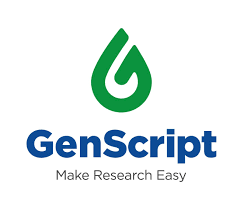
EGF, Rat
$836.63 Add to cart View Product DetailsEpidermal Growth Factor (EGF) was originally discovered in crude preparations of nerve growth factor prepared from mouse submaxillary glands as an activity that induced early eyelid opening, incisor eruption, hair growth inhibition, and stunting of growth when injected into newborn mice. It is prototypic of a family of growth factors that are derived from membrane-anchored precursors. All members of this family are characterized by the presence of at least one EGF structural unit (defined by the presence of a conserved 6 cysteine motif that forms three disulfide bonds) in their extracellular domain. EGF is initially synthesized as a 130 kDa precursor transmembrane protein containing 9 EGF units. The mature soluble EGF sequence corresponds to the EGF unit located proximal to the transmembrane domain. The membrane EGF precursor is capable of binding to the EGF receptor and was reported to be biologically active. Mature rat EGF shares 70 % a.a. sequence identity with mature human EGF.
-

EGF, Rat
$163.88 Add to cart View Product DetailsEpidermal Growth Factor (EGF) was originally discovered in crude preparations of nerve growth factor prepared from mouse submaxillary glands as an activity that induced early eyelid opening, incisor eruption, hair growth inhibition, and stunting of growth when injected into newborn mice. It is prototypic of a family of growth factors that are derived from membrane-anchored precursors. All members of this family are characterized by the presence of at least one EGF structural unit (defined by the presence of a conserved 6 cysteine motif that forms three disulfide bonds) in their extracellular domain. EGF is initially synthesized as a 130 kDa precursor transmembrane protein containing 9 EGF units. The mature soluble EGF sequence corresponds to the EGF unit located proximal to the transmembrane domain. The membrane EGF precursor is capable of binding to the EGF receptor and was reported to be biologically active. Mature rat EGF shares 70 % a.a. sequence identity with mature human EGF.
-

EGF, Rat (CHO-expressed)
$521.81 Add to cart View Product DetailsEpidermal Growth Factor (EGF) is a potent growth factor that stimulates the proliferation of various epidermal and epithelial cells. Additionally, EGF has been shown to inhibit gastric secretion, and to be involved in wound healing. EGF signals through the EGF receptor (EGFR) also known as erbB1, is a class I tyrosine kinase receptor. This receptor also binds with TGF-α and VGF (vaccinia virus growth factor). EGF-receptor binding results in cellular proliferation, differentiation, and survival. EGF is a low-molecular-weight polypeptide first purified from the mouse submandibular gland, but since then found in many human tissues including submandibular gland, parotid gland. Salivary EGF, which seems also regulated by dietary inorganic iodine, also plays an important physiological role in the maintenance of oro-esophageal and gastric tissue integrity. The biological effects of salivary EGF include healing of oral and gastroesophageal ulcers, inhibition of gastric acid secretion, stimulation of DNA synthesis as well as mucosal protection from intraluminal injurious factors such as gastric acid, bile acids, pepsin, and trypsin and to physical, chemical and bacterial agents.
-

EGF, Rat (CHO-expressed)
$36.23 Add to cart View Product DetailsEpidermal Growth Factor (EGF) is a potent growth factor that stimulates the proliferation of various epidermal and epithelial cells. Additionally, EGF has been shown to inhibit gastric secretion, and to be involved in wound healing. EGF signals through the EGF receptor (EGFR) also known as erbB1, is a class I tyrosine kinase receptor. This receptor also binds with TGF-α and VGF (vaccinia virus growth factor). EGF-receptor binding results in cellular proliferation, differentiation, and survival. EGF is a low-molecular-weight polypeptide first purified from the mouse submandibular gland, but since then found in many human tissues including submandibular gland, parotid gland. Salivary EGF, which seems also regulated by dietary inorganic iodine, also plays an important physiological role in the maintenance of oro-esophageal and gastric tissue integrity. The biological effects of salivary EGF include healing of oral and gastroesophageal ulcers, inhibition of gastric acid secretion, stimulation of DNA synthesis as well as mucosal protection from intraluminal injurious factors such as gastric acid, bile acids, pepsin, and trypsin and to physical, chemical and bacterial agents.
-

EGF, Rat (CHO-expressed)
$68.14 Add to cart View Product DetailsEpidermal Growth Factor (EGF) is a potent growth factor that stimulates the proliferation of various epidermal and epithelial cells. Additionally, EGF has been shown to inhibit gastric secretion, and to be involved in wound healing. EGF signals through the EGF receptor (EGFR) also known as erbB1, is a class I tyrosine kinase receptor. This receptor also binds with TGF-α and VGF (vaccinia virus growth factor). EGF-receptor binding results in cellular proliferation, differentiation, and survival. EGF is a low-molecular-weight polypeptide first purified from the mouse submandibular gland, but since then found in many human tissues including submandibular gland, parotid gland. Salivary EGF, which seems also regulated by dietary inorganic iodine, also plays an important physiological role in the maintenance of oro-esophageal and gastric tissue integrity. The biological effects of salivary EGF include healing of oral and gastroesophageal ulcers, inhibition of gastric acid secretion, stimulation of DNA synthesis as well as mucosal protection from intraluminal injurious factors such as gastric acid, bile acids, pepsin, and trypsin and to physical, chemical and bacterial agents.
-
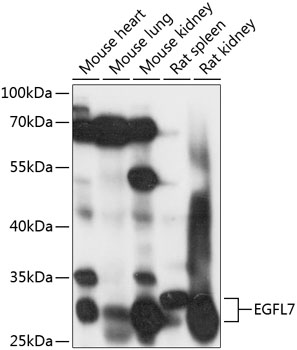
EGFL7 Rabbit pAb
$239.89 Add to cart View Product DetailsPolyclonal Antibodies
-

EGFL7 Rabbit pAb
$86.94 Add to cart View Product DetailsPolyclonal Antibodies
-

EGFR (L858R) Rabbit mAb
$264.04 Add to cart View Product DetailsMonoclonal Antibodies
-

EGFR (L858R) Rabbit mAb
$103.04 Add to cart View Product DetailsMonoclonal Antibodies
-

EGFR Rabbit mAb
$103.04 Add to cart View Product DetailsMonoclonal Antibodies
-

EGFR Rabbit mAb
$103.04 Add to cart View Product DetailsMonoclonal Antibodies
-

EGFR Rabbit mAb
$264.04 Add to cart View Product DetailsMonoclonal Antibodies
-

EGFR Rabbit mAb
$264.04 Add to cart View Product DetailsMonoclonal Antibodies
-

EGFR Rabbit pAb
$239.89 Add to cart View Product DetailsPolyclonal Antibodies
-

EGFR Rabbit pAb
$239.89 Add to cart View Product DetailsPolyclonal Antibodies
-

EGFR Rabbit pAb
$86.94 Add to cart View Product DetailsPolyclonal Antibodies
-

EGFR Rabbit pAb
$86.94 Add to cart View Product DetailsPolyclonal Antibodies
-

EGG WHITE
$36.92 Add to cart View Product DetailsEGG WHITE
-

EGG WHITE
$57.16 Add to cart View Product DetailsEGG WHITE
-

EGG WHITE
$82.63 Add to cart View Product DetailsEGG WHITE
-
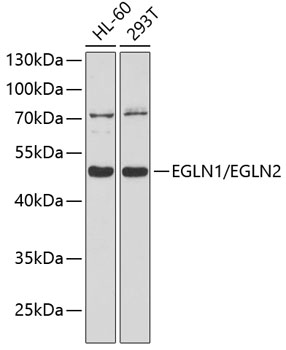
EGLN1/EGLN2 Rabbit pAb
$239.89 Add to cart View Product DetailsPolyclonal Antibodies
-

EGLN1/EGLN2 Rabbit pAb
$86.94 Add to cart View Product DetailsPolyclonal Antibodies
-

EGR1 Rabbit mAb
$296.24 Add to cart View Product DetailsMonoclonal Antibodies
-

EGR1 Rabbit mAb
$119.14 Add to cart View Product DetailsMonoclonal Antibodies
-

EGR1 Rabbit pAb
$296.24 Add to cart View Product DetailsPolyclonal Antibodies
-

EGR1 Rabbit pAb
$86.94 Add to cart View Product DetailsPolyclonal Antibodies
-

EGR1 Rabbit pAb
$86.94 Add to cart View Product DetailsPolyclonal Antibodies
-

EGR1 Rabbit pAb
$239.89 Add to cart View Product DetailsPolyclonal Antibodies
-

EGR2 Rabbit mAb
$103.04 Add to cart View Product DetailsMonoclonal Antibodies
-

EGR2 Rabbit mAb
$264.04 Add to cart View Product DetailsMonoclonal Antibodies
-
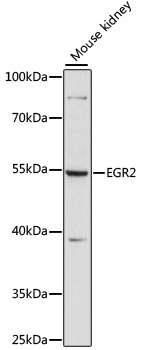
EGR2 Rabbit pAb
$86.94 Add to cart View Product DetailsPolyclonal Antibodies
-

EGR2 Rabbit pAb
$239.89 Add to cart View Product DetailsPolyclonal Antibodies
-
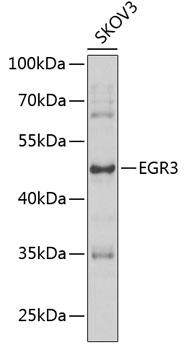
EGR3 Rabbit pAb
$239.89 Add to cart View Product DetailsPolyclonal Antibodies
-

EGR3 Rabbit pAb
$86.94 Add to cart View Product DetailsPolyclonal Antibodies
-
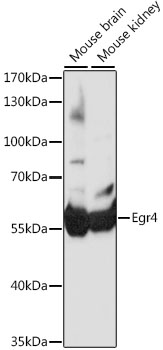
Egr4 Rabbit pAb
$239.89 Add to cart View Product DetailsPolyclonal Antibodies
-
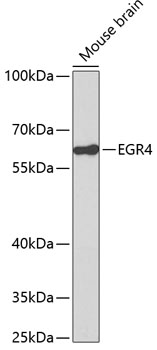
EGR4 Rabbit pAb
$239.89 Add to cart View Product DetailsPolyclonal Antibodies
-

Egr4 Rabbit pAb
$86.94 Add to cart View Product DetailsPolyclonal Antibodies
-

EGR4 Rabbit pAb
$86.94 Add to cart View Product DetailsPolyclonal Antibodies
-
EGTA
$61.24 Add to cart View Product DetailsMolecular Formula : C14 H24 N2 O10
-
EGTA
$113.85 Add to cart View Product DetailsMolecular Formula : C14 H24 N2 O10
-
EGTA
$169.05 Add to cart View Product DetailsMolecular Formula : C14 H24 N2 O10
-

EGTA 0.5M, pH 8.0, Sterile
$86.26 Add to cart View Product DetailsEGTA 0.5M, pH 8.0, Sterile
-

EGTA 0.5M, pH 8.0, Sterile
$144.80 Add to cart View Product DetailsEGTA 0.5M, pH 8.0, Sterile
-
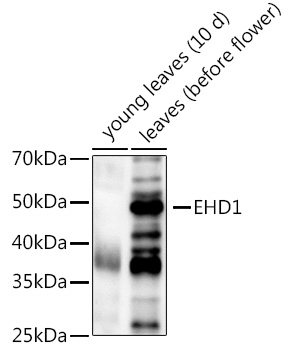
EHD1 Rabbit pAb
$119.14 Add to cart View Product DetailsPolyclonal Antibodies
-

EHD1 Rabbit pAb
$296.24 Add to cart View Product DetailsPolyclonal Antibodies


